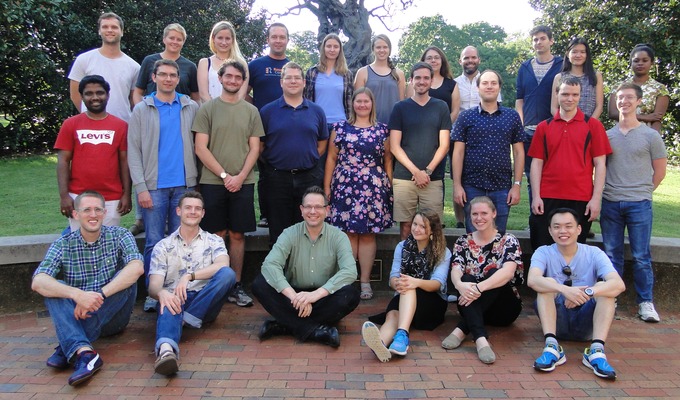 |
Meiler Lab Computational Chemical and Structural Biology |
Login
|
About Meiler Lab
Research in our laboratory seeks to fuse computational and experimental efforts to investigate proteins, the fundamental molecules of biology, and their interactions with small molecule substrates, therapeutics, or probes. We develop computational methods with three major ambitions in mind.
A) To enable protein structure elucidation of membrane proteins the primary target of most therapeutics and large macromolecular complexes such as viruses;
B) Design proteins with novel structure and/or function to explore novel approaches to protein therapeutics and deepen our understanding of protein folding pathways.
C) Understand the relation between chemical structure and biological activity quantitatively in order to design more efficient and more specific drugs.
Crucial for our success is the experimental validation of our computational approaches which we pursue in our laboratory or in collaboration with other scientists.
Current research applications focus on new approaches to a) drug and probe development for neurodegenerative disorders and diseases including Schizophrenia, Alzheimer's, and Parkinson's, b) understanding the structural determinants of antidepressant binding to neurotransmitter transporters, c) cardiac arrhythmia as caused by the complex interplay of potassium channel regulation and drug interactions, d) multidrug resistance in cancer and bacterial cells related to multidrug transporter proteins, and e) structural basis of viral infections and antibody activity.
News
- News
- In the Media
- Recent Articles
Windsor, M., "Vanderbilt, Leipzig research collaboration sees strong results." Research News @ Vanderbilt
Salisbury, D. "Leipzig collaboration yields valuable relationships." Vanderbilt Chemistry 2013.
Bartoo, C. "Controversial info release aids VUMC bird flu research" VUMC Reporter September 6, 2013.
Oak Ridge Associated Universities. "ORAU, ORNL announce winners of high-performance computing grant competition." Oak Ridge Today, 2013.
Snyder, B. "School for Science and Math students shine in Intel competition." VUMC Reporter, Jan 2013.
Meiler, J. "Die Bedeutung des FChO auf deinem akademischen Weg" Faszination Chemie 2013, 66.
Salisburg, D. "The Leipzig Connection," Research News@Vanderbilt, Vanderbilt University, Dec 2012.
Russel, J. "Bigger IS Better", Arts and Science, Vanderbilt University, Spring 2012.
Fortenberry, C. "International Chemistry: Shared reactions from Leipzig to Nashville." Vanderbilt International 2011.
Salisbury, David. "Creation of the largest human-design protein boosts protein engineering efforts." Vanderbilt Reporter, Nov 2011.
Synder, B. "School for Science and Math student sees paper published." VUMC Reporter, Vol XXI, 34. Sep 2011.
Snyder, B. "Study shows how G proteins get "turned on" by receptors" Vanderbilt Reporter 2011.
Baynham, D. Q.; Karakas, M.; Meiler, J. "Protein Structure Prediction Using Rosetta" Young Scientist, May 2011, p11-12
Smith, S. "As Beckman Scholars, undergraduates experience responsibility and research life" Arts & Science, Vanderbilt University, Spring 2011
Schreiber, A.; Meiler, J. "Modellierung G-Protein-gekoppelter Rezeptoren mit ROSETTA " Biospektrum
Joetten, F. "Formvollendet" Bild der Wissenschaft 2010, 4, 18-23.
Omlor, A.; Meiler, J. "Zu Gast im Meiler Lab an der Vanderbilt University in Nashville Tennessee!"
Jaehnigen, S.; Grjasnow, A.; Meiler, J. "Chemische und strukturelle Biologie waehrend eines Praktikum in den USA" Faszination Chemie 2009, 14., p12-16
Marino, M. "Undergraduate Open House" Vanderbilt Reporter 2008, 4.
Lerner, M. "Europe's Brain Drain" European Hospital 2008, 17, 4.
Marino, M. "Program promotes greater diversity in molecular sciences" Vanderbilt Reporter 2007, 3.
Salisbury, D. F. "Campus 'supercomputer' helps decipher mysteries of science" Vanderbilt Register 2
Joetten, F. "Ich, der Roboter" Die Zeit 2007, 41, 42-43.
Meiler, J. "Kuenstliche Intelligenz in Chemie und Biologie" Faszination Chemie 2001, 7, 35-43.
Synthesis, Antiplasmodial, and Antileukemia Activity of Dihydroartemisinin-HDAC Inhubitor Hybrids as Multitarget Drugs (2022) Pharmaceuticals
Maik Tretbar;Reni Kitte*, Sarah Dluczeka, Lorenz Beckmann, Peter Marquardt, Anna Duenkel Andreas Schubert Stephan Fricke, U. Sandy Tretbar *equal first authorship
Chemical and Cytotoxic Activity of three main Sesquiterpenoids from Warburgia ugandensis (2021) Results in Chemistry
Xia Y;Ledwitch K, Kuenze G, Duran A, Li J, Sanders CR, Manning C, Meiler J
A unified structural model of the mammalian translocator protein (TSPO) (2019) J Biomol NMR
Vu O; Mendenhall, Altarawy, Meiler
BCL::Mol2D-a robust atom environment descriptor for QSAR modeling and lead optimization. (2019) J Comput Aided Mol Des.
Brown BP;Mendenhall J, Meiler J
BCL::MolAlign: Three-Dimensional Small Molecule Alignment for Pharmacophore Mapping. (2019) J Chem Inf Model
Roushar FJ;Gruenhagen TC, Penn WD, Li B, Meiler J, Jastrzebska, Schlebach
Contribution of Cotranslational Folding Defects to Membrane Protein Homeostasis. (2019) J Am Chem Soc
Butkiewicz M;Rodriguez AL, Rainey SE, Wieting J, Luscombe VB, Stauffer SR, Lindsley CW, Conn PJ, Meiler J
Identification of Novel Allosteric Modulators of Metabotropic Glutamate Receptor Subtype 5 Acting at Site Distinct from 2-Methyl-6-(phenylethynyl)-pyridine Binding. (2019) ACS Chem Neurosci.
Li B;Mendenhall J, Meiler J
Interfaces Between Alpha-helical Integral Membrane Proteins: Characterization, Prediction, and Docking. (2019) Comput Struct Biotechnol J.
